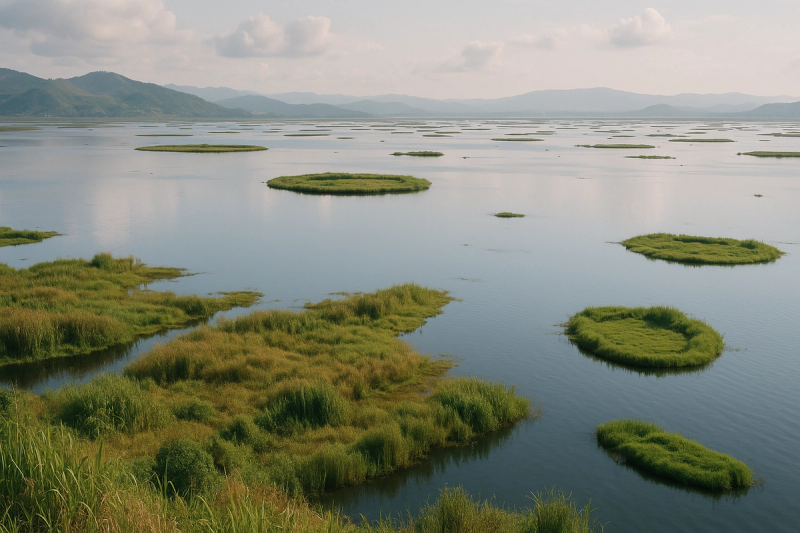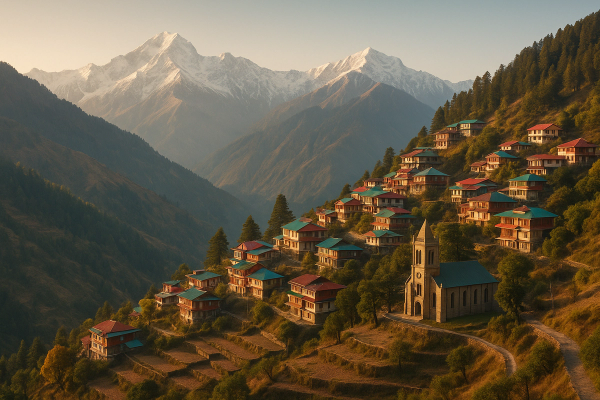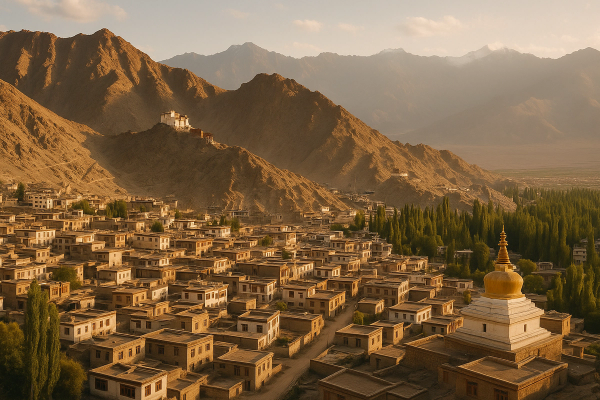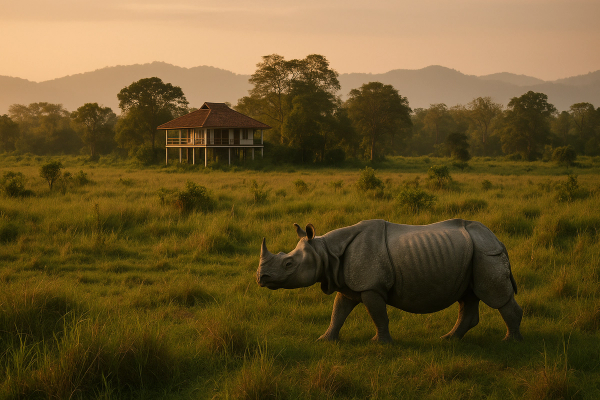Loktak Lake & Phumdis: Manipur’s Floating Paradise – a trip that honestly messed with my head (in a good way)#
I’d seen photos of Loktak so many times, you know, those dreamy mirror-water shots with weird floating circles that look like nature’s lazy green donuts. But landing up there in person… different vibe. I reached around late afternoon, slightly frazzled from the Imphal traffic and too much chai. By the time I got to Thanga, the light was soft and the lake just sat there like an old friend. No noise except a fisherman’s oar turning water gently, like someone stirring dal slowly so it doesn’t stick. The air had that smell—wet earth, fish, something grassy. It kind of grabs your brain and says, slow down yaar.¶
So what’s the big deal about these phumdis anyway?#
Phumdis are basically floating islands made of vegetation, roots, soil—like a mat. They shift, shrink, grow, break apart. And somewhere amid all that slow motion, there’s Keibul Lamjao National Park, the world’s only floating national park, which sounds made-up but is very much real. It’s home to the Sangai, Manipur’s state animal, that delicate brow-antlered deer that glides across the phumdis like it’s walking on puffed rice. Watching a place literally float is honestly hilarious and profound at the same time. The lake is huge—largest freshwater lake in Northeast India—and the communities around it live with it, not just near it. Phumdis aren’t just scenery. People fish from them, plant on them sometimes, they build temporary shelters. There’s tons of debate on conservation, the hydropower barrage, seasonal water levels. It’s complicated and beautiful and a bit fragile, and you can feel that from the first boat ride.¶
My first morning there I woke up stupid-early because someone told me sunrise here is different. And it was. I got a local boat from Thanga—no fancy motor, just a long slim thing that looks like it could tip if you sneeze. The boatman, an older guy with a grin that felt familiar, nudged us through water that went from ink-blue to pinkish as the sun climbed. We brushed past phumdi edges, soft like sponge but with roots that hook. I put my hand down once (probably not smart), and it had give, like a well-made mattress. He told me how winds push the phumdis around and how the lake’s moods change monthly. I felt like an idiot and a kid at the same time. Also learned quick—don’t be that person who jumps on phumdi for Instagram. It can damage the edges and you could literally fall in. Not a fun reel, trust me.¶
Getting there, permits, the latest vibe (and the bits nobody tells you)#
Imphal is your hub. The airport’s decent, and UPI works basically everywhere in the city. From Imphal, Moirang is about 40–45 km, then another 15–20 minutes to Thanga or Sendra. Shared vans run regularly, and if you’re like me and always underestimating distances—don’t, because traffic can get weird. As for permits, Inner Line Permit (ILP) applies to Manipur for domestic travelers. You can get it online or at entry points. Current travel vibe? There have been tensions in past months and occasionally curfews in certain areas, so stay updated and avoid night travel. Most tourist trips to Loktak have been smooth if you go via local operators and stick to the usual corridors. Carry ID, have your homestay contact, and follow local advice if there’s any advisory on boat timings or park access. It’s more chill than headlines make it sound, but still, be sensible.¶
- Fly into Imphal (Bir Tikendrajit International Airport). Plenty of flights from Kolkata, Guwahati, Delhi. Outside arrivals, you’ll find prepaid taxis; I usually bargain for a day trip because it works out cheaper than piecemeal rides.
- ILP: Indian citizens need it for Manipur. As of early 2025, ILP is still in effect. You can apply online (easy-ish), or get it on arrival if you’re entering by road/air. Fee is small, validity commonly 10–15 days. Keep a couple of printed copies, because your phone network might act up when you really need it.
- Imphal to Loktak: Shared vans from Ima Keithel area are around ₹120–₹200 per seat to Moirang. A private taxi for a day trip Imphal–Loktak–Imphal will range ₹1800–₹2800 depending on your haggling skills and season. Buses exist too, slower but cheap (₹70–₹100).
- Boats: From Thanga, basic paddled boats for 45–60 minutes usually cost ₹800–₹1500 per boat (fits 3–4 people). Sunrise rides can be a bit more. Ask for life jackets—some guys have them, some don’t, and sometimes they’re hidden in a corner because tourists don’t ask. Do ask.
Stays: resorts with sunrise views or homestays that feel like home#
I split my time between a proper resort and a homestay. The famous one is Sendra Park & Resort (by Classic), right on a hill with panoramic views. I won’t lie, waking up there to a lake that looks poured from glass—worth it. Rooms will be around ₹4000–₹8000 depending on season and room type. Great for couples, folks who want comfort. But then there’s the charm of staying on the lake’s edge with people who live this life daily. In Thanga and Karang, homestays are steadily growing—simple, warm, sometimes a bit rough around the edges (like my room had one window that didn’t lock properly, but the view didn’t care). Expect ₹1200–₹2500 per night including basic meals. Karang Island, btw, was declared India’s first cashless island a few years back. UPI, QR, the whole thing. You might still need some cash for tiny stalls, but overall it felt modern in a beautifully old-school setting.¶
Food… oh man. Manipuri food is soulful. I’ve eaten stuff here that made me go quiet in the best way. Try eromba (spicy mashed boiled veggies with fermented fish), singju (salad with lotus stems and hibiscus leaves sometimes), chamthong/kangshoi (light vegetable stew), and ngari, the fermented fish that’s everywhere—you’ll smell it before you taste it. It’s strong, but the flavour grows on you. Fish thalis around the lake are common; fresh catch from Loktak makes all the difference. Chak-hao (black rice) pudding is a must—deep purple, slightly nutty, not too sweet. In Moirang bazar I ate a plate of fish curry and rice for ₹120 that tasted like someone’s grandmother had made it with care and zero rush. With tea, I overshared about cricket with the owner for 20 minutes because the vibe was like that. You get the picture.¶
What to actually do: my honest favorites, without the fluff#
People will sell you big itineraries, but keep it simple. Sunrise boat, a nature walk, a quiet afternoon, and a cultural hour or two—perfect. The place asks you to downshift. Don’t try to conquer, just listen… observe… then maybe nap. Here are the things that really stuck with me and are worth your time and money.¶
- Sunrise boat ride from Thanga. Be there before 5:30–6:00 am, depending on season. The light kisses the phumdis, birds pop up, fishermen wave like you’re their cousin. Costs ₹800–₹1500 per boat. Wear layers, mornings can be cold. Don’t forget a dry bag for your phone; you will cry if it falls in.
- Keibul Lamjao National Park watchtower. Go with a local guide. Entry is usually ₹30–₹50 for Indians; camera fee may be ₹100–₹200. Guide ₹300–₹500. Best chance to spot Sangai is early morning or late evening when it’s cooler. Don’t shout. Don’t throw stuff. Just stand and let your eyes adjust—you’ll start seeing movement on the phumdi that at first looks like wind.
- Karang Island loop. Take a boat from Thanga to Karang, walk or rent a cycle. It’s calm, textured, people are friendly and curious. The cashless thing is cool—most shops accept UPI. Perfect for slow travel days. Ask about small fish fries and tea stalls near the jetty.
- INA Museum in Moirang. It’s where the tricolour was first hoisted on Indian soil by the INA. History nerd or not, you feel something here. Entry is cheap, timing usually 10 am–4 pm-ish (do check locally), and the displays are old-school but solid.
- Sendra viewpoint for sunset. The sky goes peach, the water folds dark, and if the wind is right, you’ll hear distant voices carrying across the lake. If you can, stay later to stargaze. Few places in India still give you that big sky feeling.
Best months, weather moods, and the festival energy#
October to March is peak good weather—cool, clean air, clearer views. Winter mornings get biting cold, so pack a warm layer. April–June is warmer but still doable if you like quieter travel. Monsoon (June–September) is lush, phumdis look extra green, but heavy rain can mess with boat timings and paths get slushy. Birdwatching is decent in winter; the water level plays a big role in how much phumdi you’ll see. The Sangai Festival (usually in November) is a big deal across Manipur—culture, music, dance, food stalls. The atmosphere around Imphal and sometimes Moirang picks up nicely. Do check current schedules, because events and venues can shift. If you’re into photography, early winter is killer for misty frames and crisp reflections.¶
If you’re budgeting: a comfortable 2-day trip from Imphal to Loktak might run like this—stay ₹1200–₹5000 per night depending on homestay vs resort, boat ₹800–₹1500, park and guide ₹400–₹800 total, meals ₹100–₹400 per meal if you’re eating local. Taxi day hire ₹1800–₹2800, shared vans much cheaper. Total ballpark: ₹5000–₹15000 for two days per person depending on choices. Always keep some extra for random snacks and souvenirs; the lake tends to make you hungry.¶
Responsible travel here isn’t a poster, it’s basic respect#
Phumdis are delicate. The lake’s hydraulic history is complex—there’s the Ithai barrage and hydropower stuff that changed how water levels behave, which impacts phumdi growth cycles. Locals have opinions (lots), and they deserve space to live, not just to perform for tourists. Practical bits: don’t step on phumdis unless a guide okays it, carry back your plastic, avoid throwing flower offerings in the water (pretty for one minute, pollution later), and skip drones near wildlife and settlements. Ask before photographing people—most are cool, a few may not be, and either way they’re not props. If you’re booking boats, choose locals who keep life jackets and don’t chase birds for your video. I made that mistake once elsewhere, never again.¶
One moment that stays with me: a fisherman joking that the lake “feeds us, scolds us, and hugs us” all in one day. We were floating near a thin phumdi line and he pointed to a spot where last year there was a thicker patch. The way he spoke—no anger, just acceptance—made me unusually quiet. Then he asked about Delhi weather and complained about his WhatsApp not getting signal, and we both laughed. Human, you know? I went home with fish-smell on my jacket and exactly zero regrets.¶
If you let Loktak set the pace, it gives you more than views—it gives you time, which is rarer than money when we’re traveling.
Quick tips that actually helped me (and will probably save you a little stress)#
Carry a light jacket for mornings, sunscreen for afternoons, and a cap that won’t fly off. Footwear: something you don’t mind getting wet. Keep cash for small shops even though UPI is common; network can drop when you least expect it. Print your ILP copy if possible. Don’t overpack tech—one power bank, a dry pouch, done. If you’re sensitive to strong smells, prep yourself for ngari, because it’s everywhere and honestly delightful if you give it a chance. Also, sit quietly by the water at least once without your phone. Don’t be that person scrolling reels while the world’s only floating national park is literally happening around you.¶
If you want a simple 2-day plan#
Day 1: Leave Imphal by 8 am, reach Moirang around 9:30–10, quick tea. Head to Thanga, check into your homestay or drop bags. Midday boat or just wander the shore, eat a fish thali in a lakeside shack. Late afternoon, go to Sendra viewpoint for sunset. Night: slow dinner, early sleep. Day 2: Sunrise boat (important), then Keibul Lamjao with a guide. If time permits, hop to Karang Island, cycle a bit, sip tea while staring at water that looks like it’s thinking. Back to Moirang for the INA Museum, lunch in the bazar, return to Imphal by late evening. This plan works even if you’re lazy like me on occassion.¶
Final thoughts: would I go back?#
Yes. In a heartbeat. Loktak is one of those places that doesn’t shout, it hums. It’s imperfect and alive and intensely local. You can’t do it justice in a checklist. You go, you float, you listen. If you’re planning it, keep it flexible and kind. And if you want more real-world travel stories and tips (not just glossy stuff), I keep peeking at AllBlogs.in for ideas—found some solid leads there when I was planning this trip too.¶














